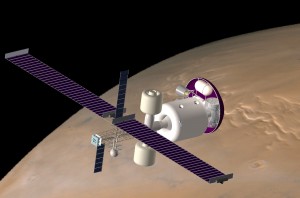GAC was featured in Fast Company Magazine regarding GOLD (Gossamer Orbit Lowering Device) and the methods to clean up Space Junk. From the article: Space junk is everything from spent rocket upper-stages that measure meters across, to lost bags of tools let go astronauts, to shattered Chinese satellites to flecks of paint moving at 25 […]
Author: Global Aerospace
Development of HyperCMST
GAC was featured on SpaceRef.com on it’s announcement of the development of HyperCMST (Hypersonic Control Modeling & Simulation Tool) to be used for control studies for planetary atmospheric entry and descent, aerodynamic orbital capture and aerodynamic gravity assist. From the article: Global Aerospace Corporation announced today that it has begun development of a Hypersonic Control Modeling […]
Exploring Mars With Balloons
GAC featured in an article published on SpaceDaily in regards to the possibility of space exploration via Space Balloons. From the article: Balloons outfitted with innovative steering devices and robot probes may be the best way to perform detailed surveys of Mars in preparation for human exploration. Dr. Alexey Pankine, project scientist at the Global Aerospace Corporation, presented an analysis of balloon applications for Mars exploration […]
Rechargeable lithium battery for aerospace missions
GAC featured in GEN (Genetic Engineering & Biotechnology News) regarding GAC’s plans (in collaboration with NASA’s Jet Propulsion Laboratory) to produce a user-friendly software model called Dakota to predict the long-term behavior of advanced rechargeable Lithium Ion batteries in aerospace applications. From the article: The development of the Dakota model for Li-based batteries will enable […]
Earth-Mars Interplanetary Rapid Transit System
Global Aerospace Corporation was featured on Cosmiverse: Your Universe Online. The article goes on to explain Global Aerospace’s plans for interplanetary space travel between Earth and Mars. From the article: Global Aerospace Corporation (GAC) is a California company with a mission. If they get their way, hopefully one day it will become a space mission. They want to establish a system of […]
How to Put Humans on Mars by 2035
An article from space.com featuring Kerry Nock speaking on space travel, specifically traveling to Mars via Astrotels. From the article: Nock’s two -way Red Planet rapid-transit system would transfer passengers from Earth to the International Space Station (ISS), then to a farther-out spaceport using swift but cramped “taxis,” which would then intercept the Astrotel, a 10-passenger flying […]
Gossamer Orbit Lowering Device for Safe and Efficient De-orbit
An inflatable de-orbit system that accelerates natural orbit decay by orders of magnitude is discussed
Deployable Platforms: Animation
An animated video illustrating the operations of a deployable platform
Sailing the planets: exploring Mars with guided balloons
Dr. Alex Pankine of Global Aerospace Corporation explains the potential of planetary exploration with guided balloons.
Astrotels might aid explorers’ Mars trips
Kerry Nock and Global Aerospace Corporation were featured in a published online article on FloridaToday.com








